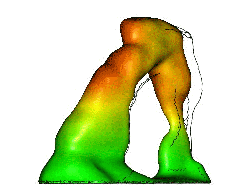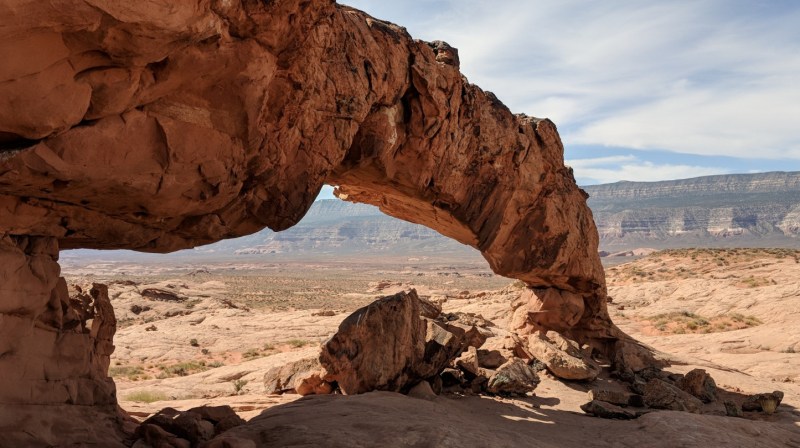
In the 1990 movie The Hunt For Red October, a stealth submarine is located by what a computer thinks are seismic sounds, but when sped up, they are clearly mechanical. We won’t spoil it further on the off chance that you haven’t seen. We can’t help but wonder if [Prof. Jeff Moore] and his team at the University of Utah were inspired by the movie. Why so? Because they have taken the seismic vibrations of the beautiful arches in Utah, US and sped them up 25 times, placing them right in the range of human hearing on their Red Rock Tones website. Go have a quick listen. We’ll be right here.
The resulting sound bites are just beautiful, and some of them have an almost eerie underwater tone to them as if driven along by a clandestine propulsion system. But that might just be our imagination running away a bit. That’s likely the point of this scientific exercise, however- taking raw scientific data and making it accessible and somehow relevant to even non-geologists.

[Prof Moore] and his team aren’t just placing seismometers on natural rock arches for the fun of it, even though that does sound like some fun. Instead, they are studying the natural resonances of these rock formations- both the primary frequencies and the harmonics. By monitoring changes in their resonant frequencies over time, they gain an understanding of how the rock is changing- especially as it relates to the impact that humans have on these natural wonders.
What’s more, these audible representations of seismic waves are something that may be possible for the determined hacker. We’ve featured several DIY seismometers such as this hacked USB mouse designed to detect elephants on the move. Could it be sensitive enough for measuring seismic activity? Try it out, and let us know!
Special thanks to [Prof. Jeff Moore] for permission to use the images for this article.
















I wish the recording were longer. It’s a beatiful ambient music
Genuine rock music.
1 +
So the Rolling Stones are just a pyroclastic flow?
Great name for a cover band btw. :-)
I can hear Sonic the Hedgehog picking up rings just from looking at the Double O photo…
This has some intriguing possibilities – imagine if you “listened” to the structure of a large building, bridge or airframe. Many of these are highly damped but useful data may still be available.
Ultrasonic crack/fracture methods are already in place, but not subsonic ones that I’m aware of.
Oldskool metal casters would ping the castings with a hammer to check for integrity.
The railroads smacked the wheels to detect cracks. (A common problem I hear) Also, the failures of tracks over time resulted in the first massive investigation into metal fatigue. (A track is the longest bearing race in the world)
Ever Hear The Stones?
I thought I didn’t hear the sound, but there is quite a wind blowing around the house, so I didn’t notice the sound from the arches as separate
id like to imagine that someone diabolical has got their hands on this data and is now constructing a device to resonate the arches at their fundamental frequency. that’s a James bond villain sub plot right there